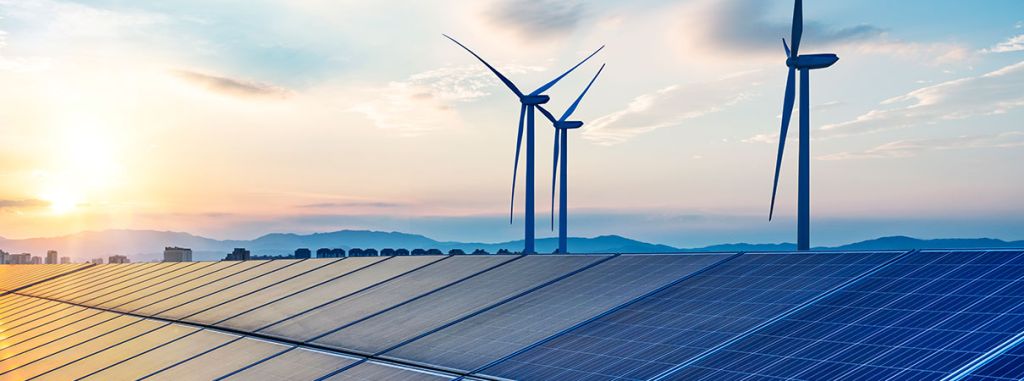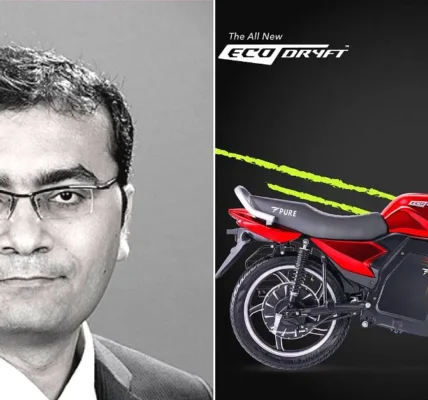U.S. Secretary of Energy Jennifer M. Granholm and Indian Minister of Petroleum and Natural Gas Hardeep Singh Puri held the third ministerial meeting of the U.S.-India Strategic Clean Energy Partnership, launched in September 2021. This effort focuses government, industry, and other stakeholder efforts to advance energy security, clean energy innovation, and decarbonization efforts to support the energy transition while ensuring clean energy access. Below is the joint statement released by the United States and India.
Today, the Ministerial meeting of the U.S.-India Strategic Clean Energy Partnership (SCEP) was held between Indian Minister of Petroleum and Natural Gas His Excellency Hardeep S. Puri and U.S. Secretary of Energy Jennifer M. Granholm in New Delhi. During the meeting, the sides noted the growing importance of bilateral energy cooperation between the countries while underscoring the critical importance of bilateral clean energy engagement and the achievements of the SCEP in strengthening energy security, creating opportunities for clean energy innovation, addressing climate change and creating employment generation opportunities.
In this context, the sides welcomed the growing energy trade between the countries which has been consistently scaling new heights and welcomed the commercial partnerships facilitated by the SCEP.
The sides renewed their commitment to work towards a just, orderly, and sustainable energy transition, which prioritizes access to reliable, affordable, and clean energy supply. Highlighting that India and the US represent the largest democracies, and the largest and fastest growing economies in the world, the sides underscored the importance of joint action and collaboration not only for bilateral progress but also for navigating the global energy transition.
The sides reviewed the ambitious and dynamic SCEP mandate, which over the years has deepened and strengthened collaboration across a wide breadth of clean energy workstreams, including clean and renewable energy, energy efficiency, increased collaboration in emerging technologies like battery storage and swapping technologies, gas hydrates, advanced biofuels, and hydrogen and electrolyzer production. In this context, the sides recognized the importance of producing green/clean hydrogen as a critical energy source for global decarbonization and agreed to support each other’s national hydrogen missions.
The sides also welcomed the work done by the five pillars of the SCEP towards deepening the cooperation between the Public and Private sectors to support decarbonization in both countries, including through public-private task forces, reverse trade missions, India-US Business Roundtables chaired by the Ministers, and other commercial dialogues.
The sides emphasized the importance of promoting energy access, affordability and energy justice in each country. The sides also acknowledged that successfully achieving ambitious climate and clean energy aspirations necessitates coordinated efforts on development of energy transition roadmaps, capacity building, job skilling, and sharing of best practices at all levels of government. In that context, the sides agreed to work toward development of net zero villages in India to support the clean energy transition.
The sides discussed ways of advancing the positive agenda outlined by Prime Minister Modi and President Biden in their Joint Statement of June 22, 2023which welcomed efforts under the SCEP to develop and deploy energy storage technologies, expand collaboration in support of their respective national hydrogen strategies and cost reduction goals, and accelerate cooperation on new and emerging renewable energy technologies. To that end, the Ministers welcomed:
establishment of the public-private Energy Storage Task Force and related efforts to support large-scale integration of renewable energy needed to support the clean energy transition;
deepened collaboration to scale and accelerate deployment of hydrogen technologies through the public-private Hydrogen Task Force and other efforts in support of their national hydrogen strategies, including a focus on common cost reduction goals;
launch of the U.S.-India New and Emerging Renewable Energy Technologies Action Platform (RETAP) to accelerate development of key technologies to advance common ambitious clean energy goals.
The Ministers also welcomed the leaders’ priority of reducing carbon emissions in the transportation sector through zero emissions vehicles and continued collaboration on securing funding and enabling affordable and accessible debt and equity financing for the e-mobility sector. The sides recognized the importance of the “Electric Vehicle (EV) financing services facility” which will create dedicated funds for e-mobility.
The sides welcomed cooperation between India and the United States to advance research, development and commercialization of technologies in the emerging fuels arena, including bio-ethanol, renewable diesel, sustainable aviation fuels, and other advanced biofuels as a unique and valued asset to the transition to a cleaner energy future.
The Ministers re-affirmed the vision of Prime Minister Modi and President Biden for establishing the Global Biofuels Alliance which is set to be launched this week in Goa. The Ministers discussed the role that the Global Biofuels Alliance will play in strengthening markets, facilitating global biofuels trade, development of concrete policy lesson-sharing and provision of technical support for national biofuels programs worldwide.
The sides also underscored the importance of a stable, sustainable, diversified, resilient, and globally responsible clean energy supply chain to enable energy transition pathways while minimizing risks and uncertainty.
The sides also welcomed ongoing collaboration in such areas as:
modernizing the power system to improve reliability, resilience, flexibility, affordability, and sustainability of cleaner energy systems;
promoting energy efficiency and conservation, including in buildings, appliances, and the industrial sector;
reducing emissions across the oil and gas sector, including through examining methane abatement and transfer and deployment of technologies under voluntary and mutually agreeable terms; and
advancing emerging technologies to support electrification and decarbonization of hard-to-abate sectors.
Recognizing the role of carbon capture, utilization and storage to reduce emissions, the sides agreed to spur partnership in this area by building on existing cooperation and welcoming new collaboration including exploring the geologic carbon storage potential. The sides welcomed the addition of Carbon Capture, Utilization and Storage as a work stream under the Emerging Fuels and Technology Pillar.
The sides also welcomed engagement through the Low-Emissions Gas Task Force to reduce emissions across the sector through deployment of emerging technologies (i.e., CCUS, hydrogen), alternative fuels, and methane abatement technologies. The Ministers welcomed the commercial partnerships facilitated by this platform.
The sides duly acknowledged the collaboration of U.S. Agency for International Development (USAID) with various Indian agencies including Indian Railways, NTPC Green National Skills Development Corporation, Skills Council for Green Jobs, and the Forum of Regulators.
The sides welcomed USAID support on feasibility of Green Chemicals for NTPC, recognizing the importance of such initiatives to ensure development of sustainable and clean energy systems.
The sides welcomed cooperation between USAID and Indian power PSUs – NTPC and SJVN– in the creation of clean energy financing policy to ensure development of sustainable, resilient, and clean energy systems.
The sides noted the importance of robust life cycle assessments and building modelling capacity to assess low carbon technologies costs and emissions, and best practices for modelling and analytics of energy consumption.
Both sides launched the South Asia Group for Energy (SAGE) to deepen the engagement between Indian agencies and U.S. national laboratories to support research, analysis, and capacity-building activities such as building modelling capacity in Life Cycle Assessment of low carbon technologies and analytics on energy consumption in building sector.
The sides noted the excellent work done by PNGRB, India and FERC, USA under their MoU framework towards development of competitive markets, and promotion of investment in the oil and natural gas sector, protection of consumer interests, capacity building of personnel, up-dation of regulatory framework. The sides also appreciated the work done by PNGRB, India and ASME, USA to develop and establish policies and programs and procedures that will promote and sustain a market for Oil and Gas in India that aligns with ASME standards and certification programs and practices.
Finally, the sides praised the longstanding joint R&D under the Partnership to Advance Clean Energy-Research (PACE-R), including the US-India Collaborative for Smart Distribution System with Storage (UI-ASSIST) consortium co-led by Indian Institute of Technology, Kanpur and Washington State University. Welcoming the importance of such R&D Initiatives, the sides welcomed the successes of PACE-R to date and highlighted the final year of the R&D track on advanced smart grid and energy storage technologies.
Agencies from across the U.S. and Indian governments demonstrated a number of accomplishments across the five technical pillars of cooperation on: 1) Power & Energy Efficiency, 2) Renewable Energy, 3) Responsible Oil & Gas, 4) Sustainable Growth, and 5) Emerging Fuels and Technologies.
The Ministers affirmed that the SCEP represents a comprehensive vision to decarbonize while ensuring healthy rates of growth for both countries and expressed hope that the work undertaken under the SCEP will continue to pave the way for a new and promising future.







